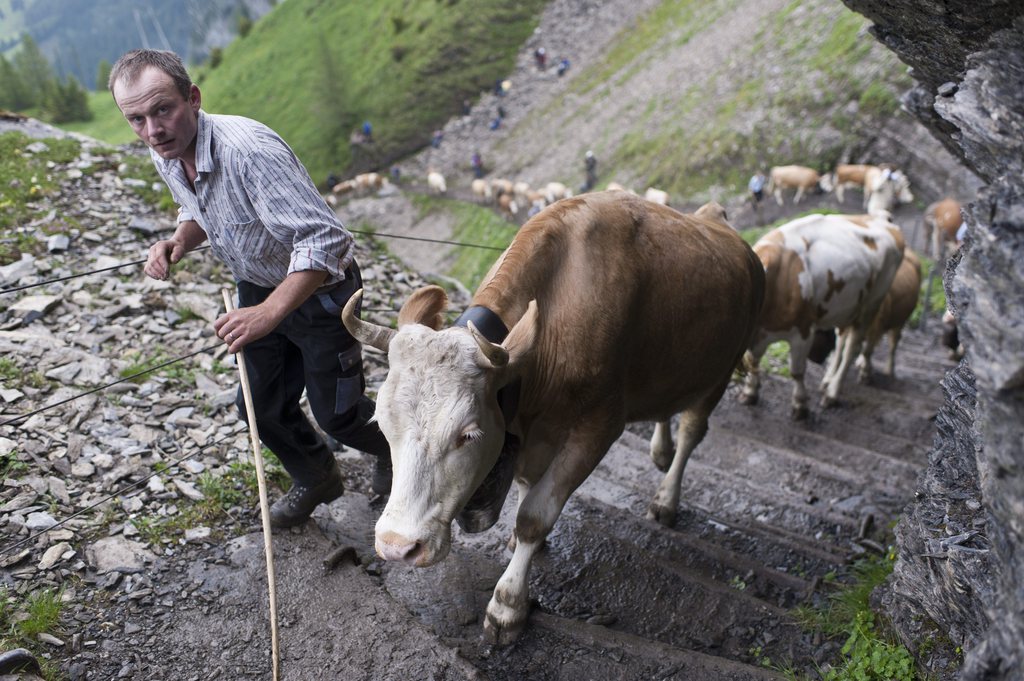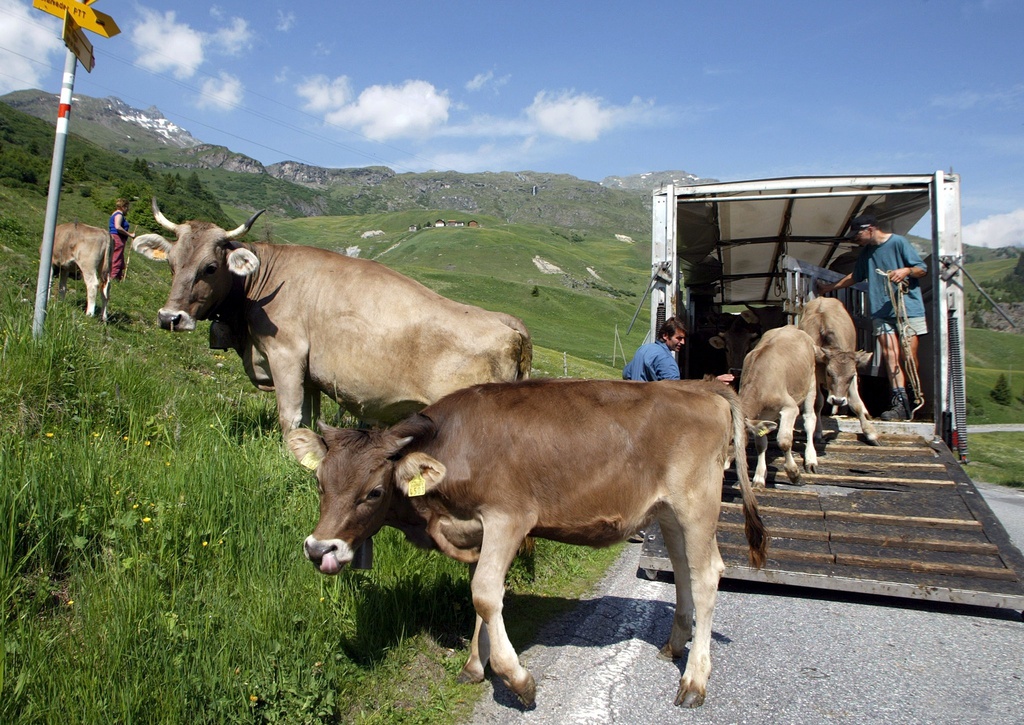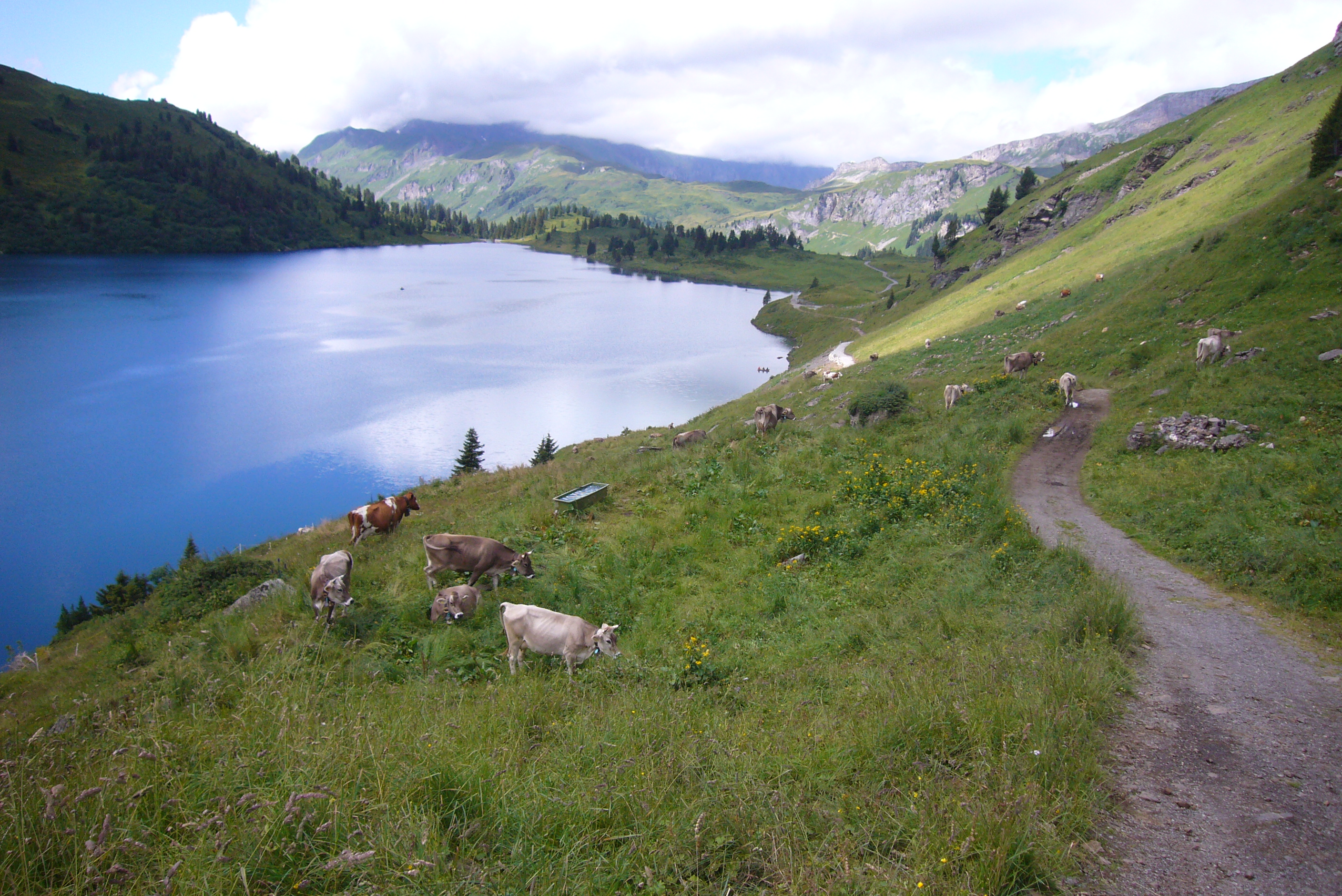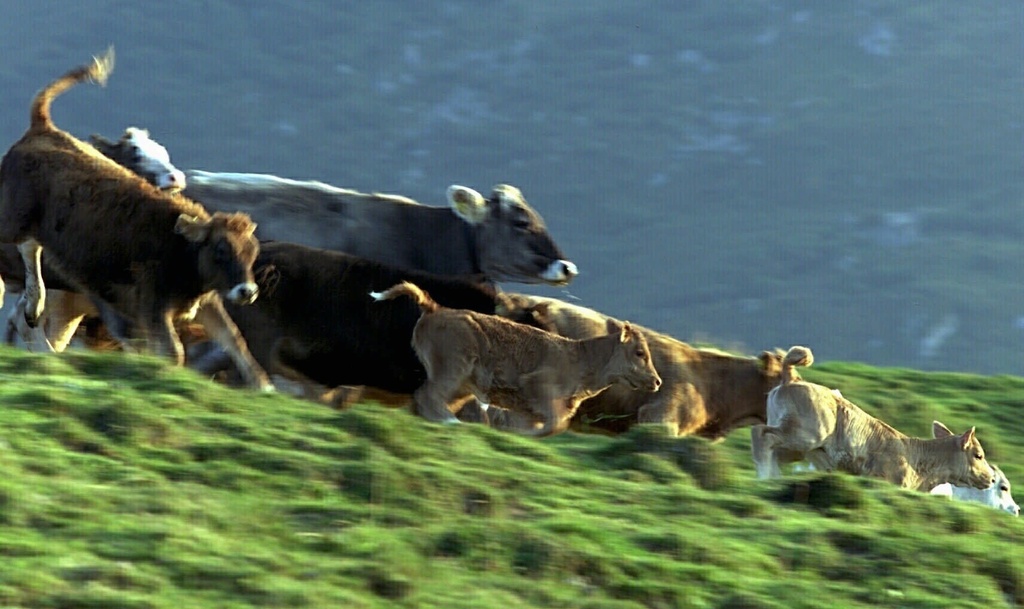Alpine pastures continue to shrink

Every year an estimated 800,000 cows, sheep and goats summer on mountain pastures in the Swiss Alps. But there is less and less suitable land available: some pastures are overexploited, while scrubland is threatening the rich alpine flora.
This is the conclusion of the latest AlpFUTUR research programme entitled, “The future of summer pastures in Switzerland”, presented on Tuesday at Schüpfheim in canton Lucerne.
Every summer 17,000 mountain farmers take their herds up to the summer pastures where they continue age-old farming traditions and make quality cheese, cold meats and other farm products.
Since 2000 the overall level of farming activity in the mountains has not dropped but there are huge regional differences. There has been a reduction for example in Val Mesolcina in canton Graubünden or in canton Valais.
In many places farmers have totally given up summer farming, while other areas have seen an intensification or prolonged stays.
“This dual trend is the main problem for biodiversity in the summer farming regions,” explained Stefan Lauber, co-author of the project from the Federal Institute for Forest, Snow and Landscape Research.
Both the over-exploited areas and those covered in scrubland are home to less species, he added.
Biodiversity
Alpine prairies are extremely important for plant diversity in Switzerland. The monitoring of biodiversity has shown that there are on average 42 plant species per 10 square metres, the greatest biodiversity concentration in Switzerland. Also, three-quarters of peat and dry prairies, which are protected, are found in these mountainous regions.
But forests, where much fewer plant species grow, are extending. Between 2006-2011 they grew by 320 square kilometres, of which 40 per cent were in mountain farming areas.
There are fears, therefore, that this continued growth of forests may lead to reduced biodiversity in some regions from 2020 onwards, the report noted.
However, the patchwork of small bushes and mountain pastures may offer an ideal habitat for certain specific plant and animal species like the Astrantia minor plant.
According to the researchers, it is difficult to define which regions need protection and also convince farmers to work on them in the best way. One solution could be farming contracts, they suggest, which would preserve the quality of the land and offer attractive compensation.
But the greatest enemy of species diversity in the Alps remains the price of milk, the researchers argue. Since doing away with milk quotas, the production of milk is no longer competitive which has led to a reduction in the size of summer herds.
Agricultural policy from 2014 to 2017 nonetheless aims to correct this. Farmers who develop ecological zones on the summer pastures that are rich in biodiversity or clear scrubland or preserve mountain buildings will receive special subsidies.
The AlpFutur research programme looked at the Swiss alpine economy via 22 projects carried out between 2009 and 2013. It is coordinated by the Agroscope research centre, which belongs to the Federal Office for Agriculture, and the Federal Institute for Forest, Snow and Landscape Research and involves 80 people from 17 different institutes.

In compliance with the JTI standards
More: SWI swissinfo.ch certified by the Journalism Trust Initiative



You can find an overview of ongoing debates with our journalists here. Please join us!
If you want to start a conversation about a topic raised in this article or want to report factual errors, email us at english@swissinfo.ch.